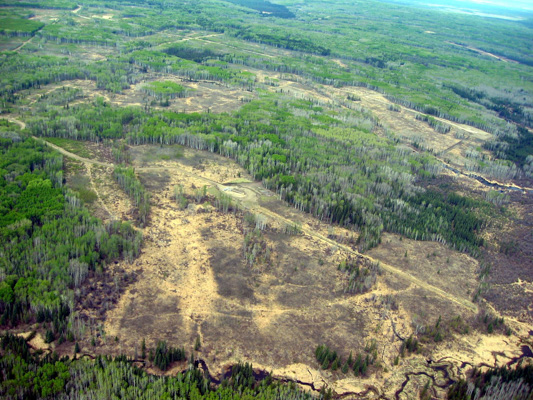
Abstract
Grizzly bears should benefit from forest harvesting strategies that emulate patterns of natural disturbance, such as wildfire, presumably because of increased foraging opportunities associated with open and edge habitats. Several studies have linked early seral habitats associated with natural and anthropogenic disturbances to increased food supply for grizzly bear. However, few have quantitatively evaluated whether food supply is higher along forest edges, particularly edges created by different forest harvesting strategies such as structure retention. Here we tested whether grizzly bear food supply was: 1) more common/abundant along forest harvest (cutblock) edges; 2) similar between undisturbed forest matrix (uncut) undisturbed forest remnants (i.e., retention patches) that were situated within forest harvests; and 3) similar in terms of responses relative to retention and forest harvest edges. To address these questions, we measured the distribution and abundance of plant-based food resources used by grizzly bears along edge distance gradients associated with forest treatments (cutblock, uncut forest, and retention patch) in Alberta, Canada. We then used information theory to compare models and evaluate support for factors. We found that blueberry (Vaccinium membranaceum, V. myrtilloides, and V. vitis-idaea.) shrubs, which are known to be sensitive to mechanical damage and soil disturbance from harvest and post-harvest site preparation, were more common/abundant near young ( ≤ 20 years) forest edges. Conversely, raspberry (Rubus idaeus) shrubs, horsetail (Equisetum arvense), and cow parsnip (Heracleum lanatum), which are known to be positively associated with soil disturbance, were generally more common/abundant away from forest edges. Blueberry, fruit production was highest at forest harvest edges and lowest in older cutblocks, as well as retention patches, which we showed contained fewer lodgepole pine (Pinus contorta) trees and more deciduous species. These results support the contention that understory disturbance, environmental conditions (e.g. light availability), and forest tree species composition could explain our research findings. As part of stand-level prescriptions, we recommend that forest managers consider maintaining uncut forest adjacent to cutblocks for up to 20 years post-harvest, and create more and smaller retention patches to increase the amount of forest edge. We also recommend that criteria be developed for selecting the spatial location of forest edges and retention patches such that blueberry shrubs are common/abundant in the undisturbed forest. This research demonstrated that forest harvesting strategies can increase food supply for grizzly bears and thus support recovery efforts of this provincially threatened species.
Get access to the full article (subscription required) here.
Citation
Larsen, T. A., Nielsen, S. E., Cranston, J., & Stenhouse, G. B. (2019). Do remnant retention patches and forest edges increase grizzly bear food supply? Forest Ecology and Management, 433, 741–761. doi:10.1016/j.foreco.2018.11.031






